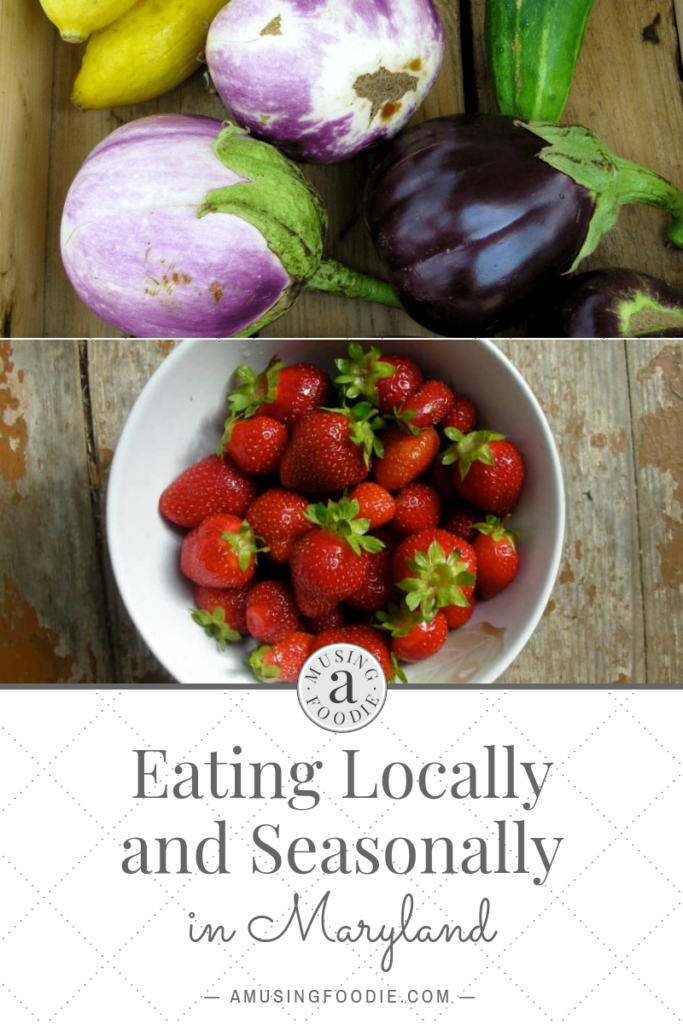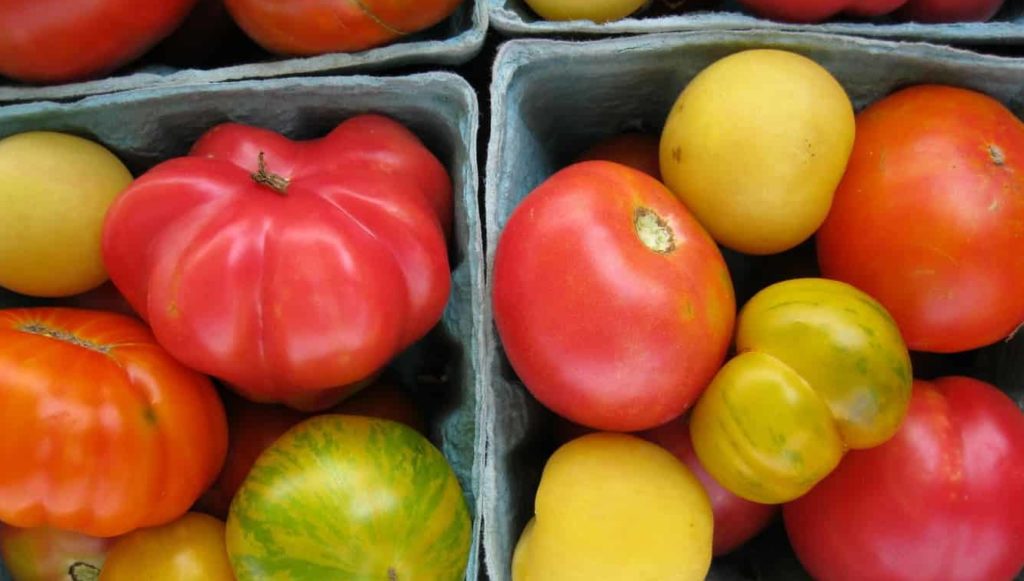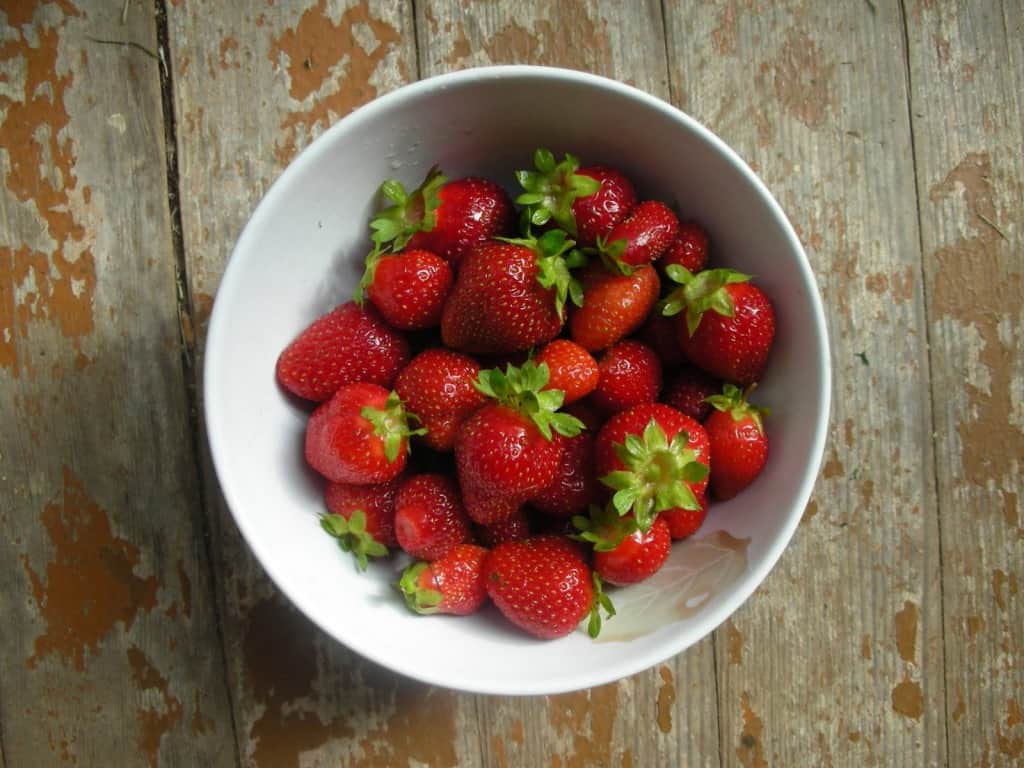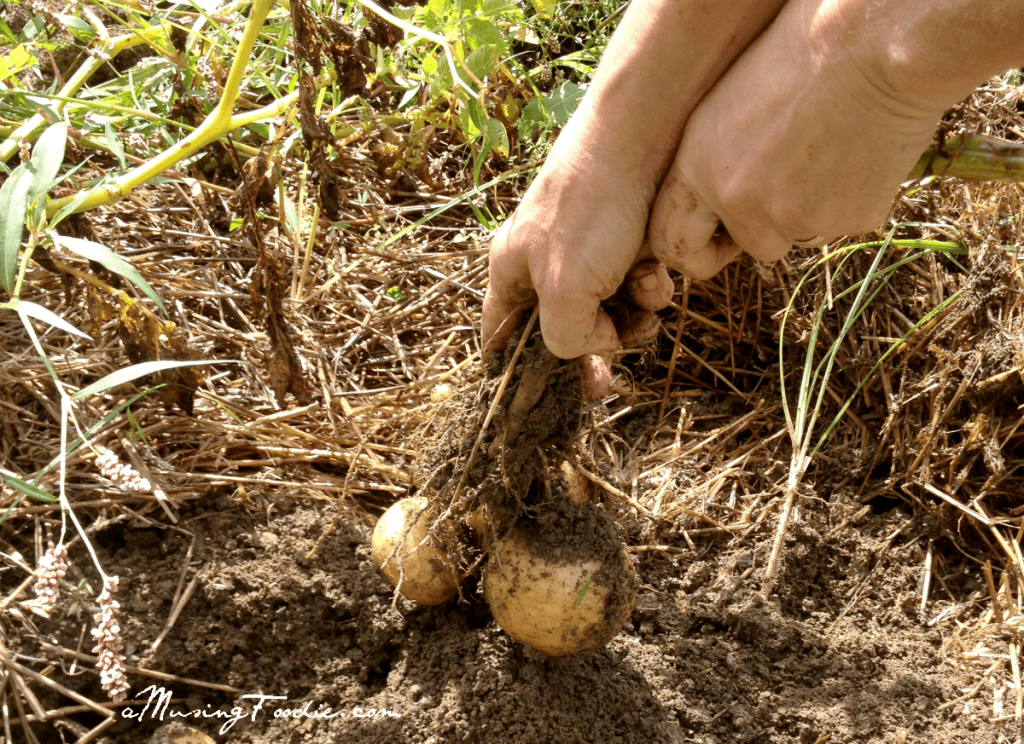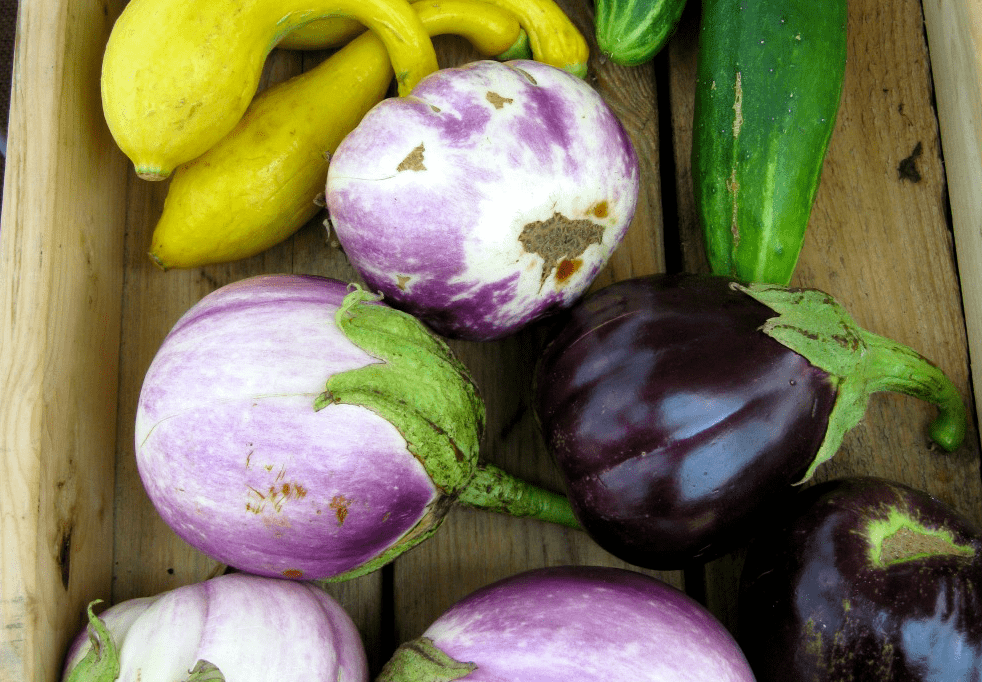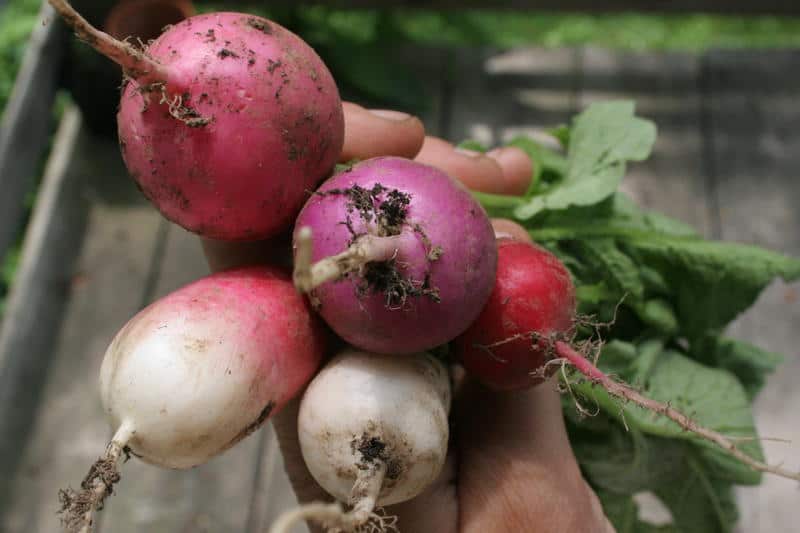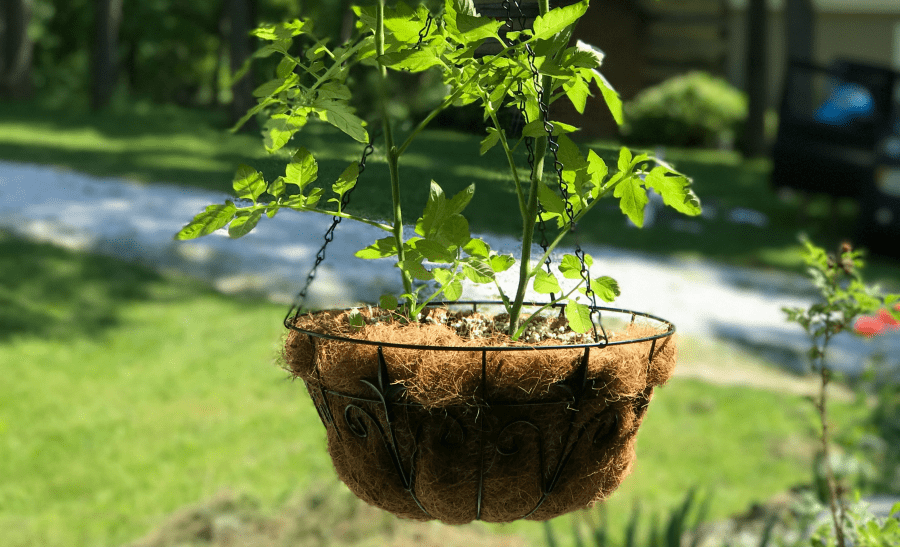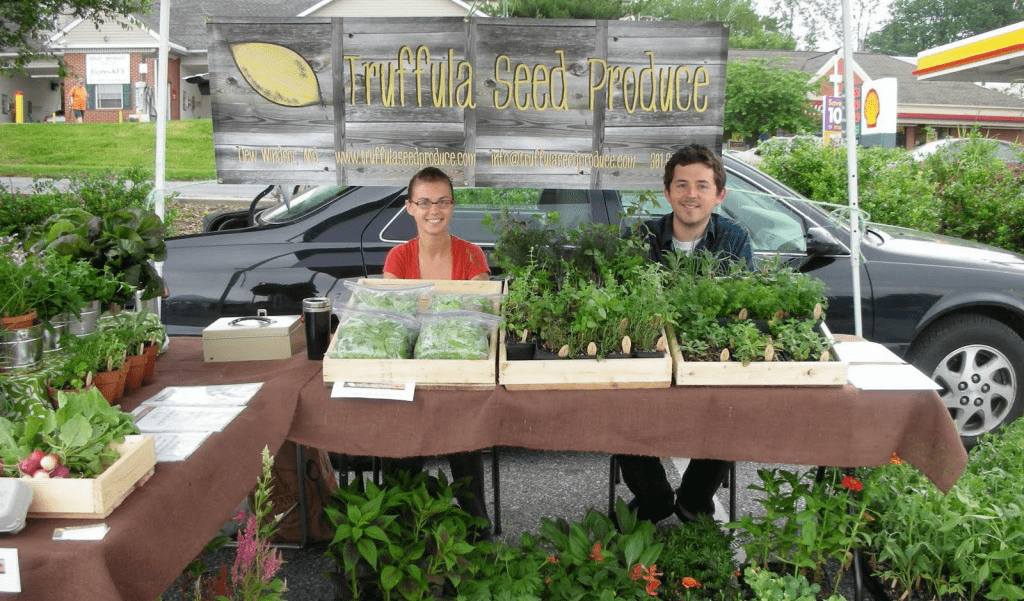Last updated on August 9, 2021 by Liza Hawkins
Whether you’re part of a CSA, visiting farmers’ markets or shopping at the regular grocery store, eating locally and seasonally in Maryland is simple with these tips from my brother-in-law, Shawn!
Finding ways to eat locally and seasonally has increasingly becoming a priority for discerning eaters.
And for good reason! Local food is often grown in a way that minimizes the use of pesticides and other sprays that are harmful to humans (and the environment).
Because local farms are situated in the same communities where their customers reside, they often operate in ways are less taxing to the surrounding ecosystem as well.
Local food also has another advantage.
Farmers who know that their products will make it onto their customers’ plates within days (or even hours) of being picked, can focus on growing varieties that are nutrient dense and full of flavor, instead of growing varieties that will have a long shelf-life.
When Josie and I would sit down to figure out what we wanted to grow each season, we didn’t have to worry about whether our tomatoes would be able to survive a two week trip across Central America, or whether they could withstand weekly doses of insecticides.
The only thing that we were concerned with is how good the tomato will taste.
Understanding the benefits of local seasonal produce is easy, but determining what’s actually local and in season can be a little more of a challenge.
Today’s supermarkets are stocked with almost every type of fruit and vegetable all times of the year and from every corner of the globe.
To make it even more confusing, because grocery stores rely on large distribution networks, they often source their produce from halfway across the world, during the very same time of year that that produce is available locally.
Weird, right?
So, then it shouldn’t come as much of a surprise that the best place to find what’s locally in-season is not the grocery store at all, but either at a producer-only farmers’ market, through a CSA, or by visiting a local farm.
Another option is to shop at a food co-op; readers in Frederick might want to try Common Market Co-op, which sources as much of its produce from local farms as possible. Even chain grocery stores have started including sections with the meat and produce that highlight items sourced locally.
Eating Locally and Seasonally in Maryland
In late May, if you live in Maryland (or the mid-Atlantic), then you can expect to start finding an abundance of local food available, including salad mixes, greens, strawberries, asparagus, radishes, green onions, and broccoli.
By June, beets, cabbage, chard, kale, snow peas, snap peas, new potatoes, and garlic have come into season.
In July, blueberries, blackberries, raspberries, cucumbers, eggplants, green beens, melons, onions, peaches, sweet peppers, squash, tomatoes and zucchini will all start appearing.
August is the time for celery, leeks, okra, pears, plums, nectarines, turnips, watermelon, and winter squash.
September brings brussels sprouts, grapes, pumpkins, and shelling beans.
Much of what is available in the spring — greens, salad mixes, green onions and radishes — can be found again in the fall as the weather cools down.
For a complete look at what is in season when in Maryland, click here.
